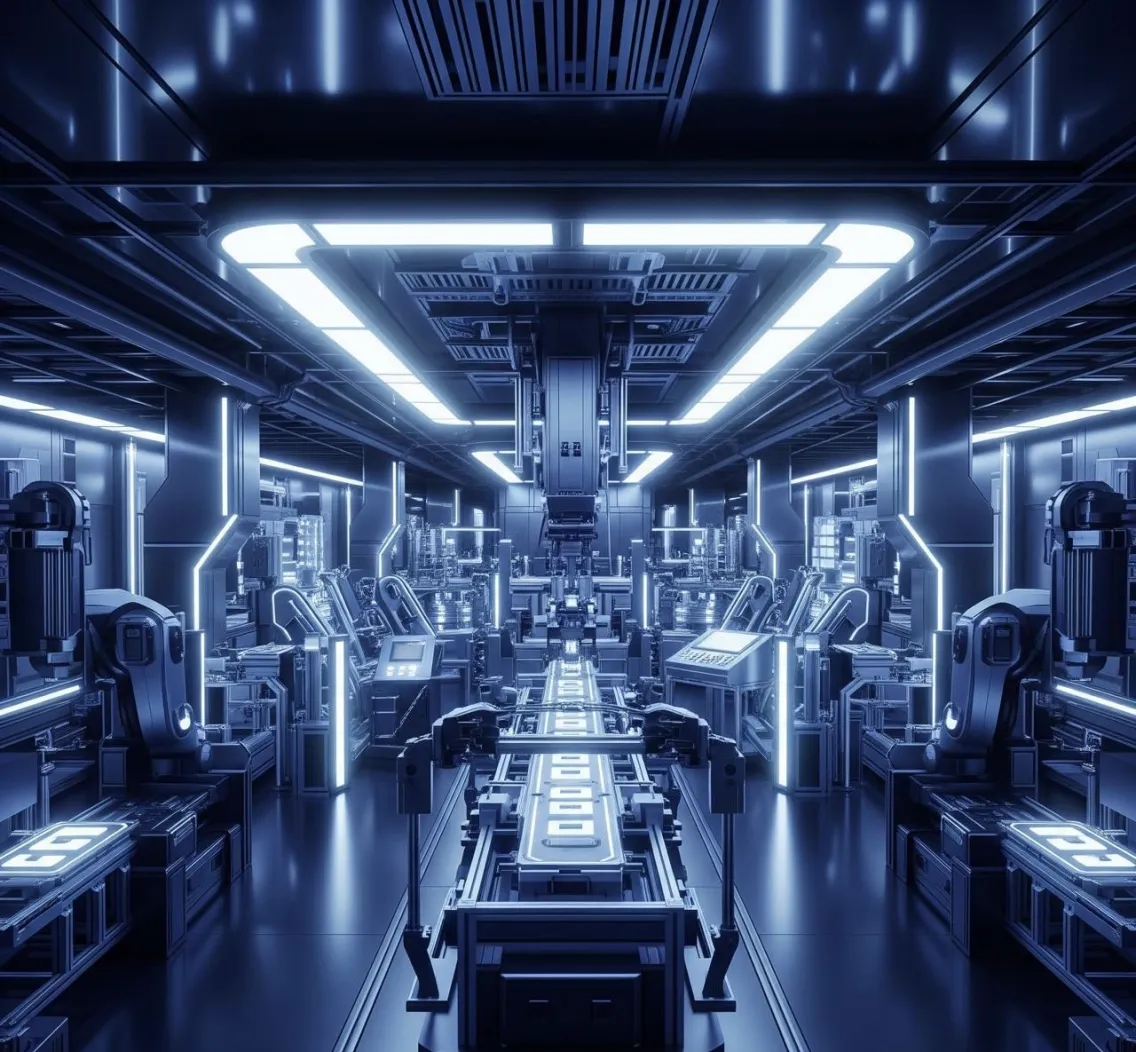
The Future of Factories
What Will a Manufacturing Plant Look Like in 2035?
By: Destiny Dickerson
Step inside a manufacturing plant in 2035 and you may not recognize it. Gone are the noisy, congested floors packed with manual machinery. In their place are intelligent, streamlined environments where robots, humans, and AI systems collaborate in real time. The factory of the future is not just about efficiency—it’s about adaptability, sustainability, and intelligence. As technologies mature and global demands evolve, manufacturing plants are poised to undergo radical transformations that will redefine how products are made and moved.
Smarter, Not Just Faster
Manufacturing in 2035 will rely heavily on advanced data systems. Real-time analytics and predictive algorithms will drive every major decision, from when to schedule maintenance to how to shift production lines in response to market trends. For example, Bosch has already implemented predictive maintenance tools that help reduce unplanned downtime by up to 25%. By 2035, this type of system will be standard across most manufacturing sectors.
Human-Machine Collaboration
Despite the rise of automation, people will continue to play a central role in the manufacturing process. However, their roles will look very different. Workers in the factory of the future will manage AI systems, operate collaborative robots (cobots), and use augmented reality headsets for diagnostics and repairs. General Motors, for instance, is already utilizing AR glasses to train and assist workers on complex assembly tasks, thereby helping to reduce errors and improve efficiency. This type of immersive training is expected to become a regular part of factory life by 2035.
Sustainability Built In
Sustainability won’t be an afterthought—it will be a core design principle. Plants will be powered by renewable energy and designed with a circular production mindset. Unilever has made significant strides in this area, operating several zero-waste-to-landfill manufacturing sites globally. In the future, more companies are expected to follow suit, integrating innovative systems that track and reduce water, energy, and material waste in real-time.
Hyper-Personalization and On-Demand Production
Gone are the days of mass production alone. Thanks to additive manufacturing and flexible production cells, factories will be able to produce small batches of highly customized products quickly and affordably. Adidas, for example, has opened “Speedfactories” that use robotics and 3D printing to create personalized shoes closer to customer locations. By 2035, this type of on-demand customization will be commonplace across various consumer goods, including electronics and home decor.
Digital Twins and Virtual Control Rooms
Digital twin technology will be the norm in future factories. Every piece of equipment, process, and even the whole facility will have a virtual counterpart. These models will allow manufacturers to simulate changes, test ideas, and predict outcomes without interrupting real-world operations. Siemens is already leading the way with digital twin solutions that will enable it to model entire production lines in a virtual space. In 2035, plant managers may oversee entire operations from home or remote offices using real-time data from these digital systems.
Resilient, Global-Local Supply Chains
COVID-19 taught the manufacturing world that supply chains must be agile and resilient. In 2035, factories will rely on a blend of local sourcing, decentralized production hubs, and global coordination—all managed by intelligent systems. Companies like Flex are building regional supply networks supported by AI-driven logistics, enabling them to adapt quickly to disruptions. This level of flexibility will be key in navigating global risks, from climate events to trade disputes.
Conclusion: A New Era for Making Things
The manufacturing plant of 2035 will be a living system—self-aware, efficient, and deeply connected to both people and planet. As data, automation, and sustainability converge, factories will become cleaner, faster, and more human-centered. While the road to 2035 won’t be without challenges, the potential for smarter, more responsible manufacturing is already within reach. The future isn’t just coming—it’s being built, one innovation at a time.
Sources:
- World Economic Forum – “The Factory of the Future: What You Need to Know”
https://www.weforum.org/agenda/2022/01/factory-of-the-future/ - McKinsey & Company – “Smart Manufacturing and the Factory of the Future”
https://www.mckinsey.com/business-functions/operations/our-insights/smart-manufacturing-and-the-factory-of-the-future - Deloitte Insights – “Industry 4.0 and the Future of Manufacturing”
https://www2.deloitte.com/insights/us/en/focus/industry-4-0.html - IBM – “Digital Twin: The Bridge Between the Physical and Digital Worlds”
https://www.ibm.com/topics/what-is-a-digital-twin